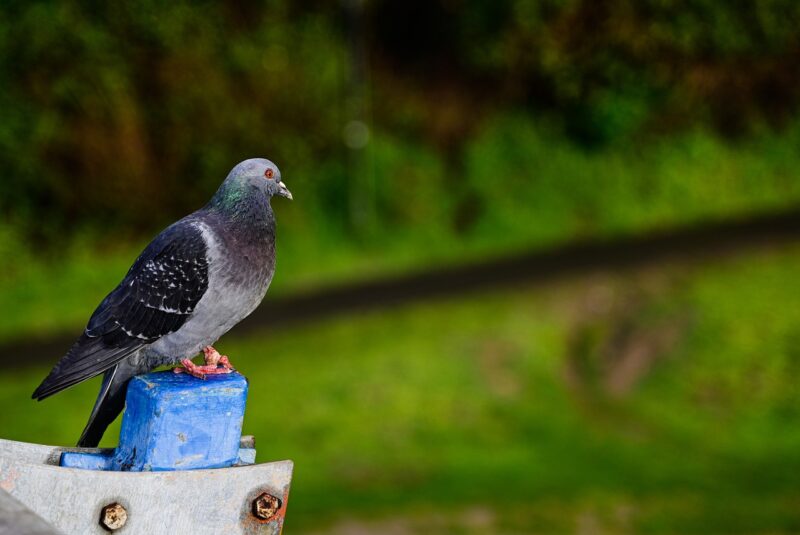
World War I, often termed the Great War, is celebrated for its vast scale and dramatic advancements in warfare technology. Yet in the midst of the aerial bombings, trench warfare, and gas attacks lay an unexpected hero – the carrier pigeon. This humble bird played a crucial, yet often overlooked, role in one of the most significant conflicts in history.
1. A Brief History of Carrier Pigeons
Carrier pigeons, or homing pigeons, possess an extraordinary navigation ability that allows them to return to their home lofts from long distances. Historically used around 500 BC, these pigeons have served as messengers throughout various cultures including the Greeks, Romans, and during the French Revolution.
By the time World War I rolled around, pigeons were already well-regarded for their reliability in delivering messages across challenging terrains. They could effortlessly navigate back to their homes even when faced with inclement weather or enemy interference.
2. The Use of Pigeons in World War I
When the war erupted in 1914, military strategists quickly recognized the importance of effective communication. With trench warfare becoming the norm, units found it increasingly difficult to maintain contact due to the chaos of battle and the limitations of contemporary communication technology like telephones and telegraphs.
Carrier pigeons were deployed in large numbers by both the Allied and Central Powers due to their ability to carry messages across enemy lines. Here are a few notable instances of their usage:
- Messengers on the Front Lines: Pigeons were stationed with soldiers in the trenches, providing a swift and reliable means of communication. Soldiers would attach messages to the pigeons’ legs, which would then be released to fly back to their designated lofts situated behind the lines.
- Thousands Saved Lives: It’s estimated that carrier pigeons successfully delivered over 200,000 messages during the war. Their quick communication often altered the course of military operations, warned units of impending attacks, and facilitated the coordination of forces.
- Notable Pigeons of World War I: Among the many heroic pigeons was a bird named Cher Ami. With over 12 missions, Cher Ami delivered a crucial message that saved the lives of 194 soldiers from the 77th Infantry Division trapped in the Argonne Forest, despite being injured in the process. Cher Ami was awarded the French Croix de Guerre for bravery.
3. The Logistics of Keeping Pigeons in War
Managing a team of carrier pigeons involved not just breeding and training but also ensuring their well-being during combat. Each pigeon had to be acclimatized to the soldiers and their surroundings. Here are some logistical points regarding pigeon use in World War I:
- Training and Selection: Pigeons were carefully selected for their homing ability and trained to return to their lofts. The process could take weeks or even months, but it was crucial for operational success.
- Care and Feeding: Soldiers on the front lines took on the responsibility of feeding and caring for the pigeons amidst the chaos. While rations were low, pigeons were often well cared for, as their ability could mean the difference between success and failure on the battlefield.
- Pigeon Loft Establishments: Each unit or division had pigeon lofts where the pigeons were housed. These were often set up in the rear, where they would be safe from enemy fire and close to the command units they were serving.
4. The Decline of Pigeons After the War
As technological advancements progressed during and after World War I, the use of carrier pigeons gradually declined. With the invention of radio communications and improved telephone technology, the need for messenger pigeons diminished.
Despite their declining usage in military operations, the legacy of these incredible birds remains significant. Their contributions during the war paved the way for modern military communication strategies, helping to emphasize the critical need for reliable communication in warfare.
Additionally, many pigeons were retired post-war and often went on to live in peace in domestic homes, while some continued to be acknowledged for their wartime contributions, receiving medals and honors.
5. Conclusion: A Forgotten Legacy
The contribution of carrier pigeons during World War I cannot be overstated. They served as unsung heroes that bridged communication gaps in an era when reliable information could spell the difference between victory and defeat.
Through their remarkable navigation skills and unwavering courage, these avian messengers played an integral role in military strategy during one of the deadliest conflicts in history. Even today, they remind us of the innovative ways humans have relied on nature to aid in survival and communication.
While many aspects of World War I are remembered through the tales of human bravery, it’s time we also celebrate and honor the minimal, yet vital contributions that carrier pigeons made on the battlefield.
Their story is a testament to the notion that every element of war, no matter how small or seemingly insignificant, can leave an indelible mark on history.







